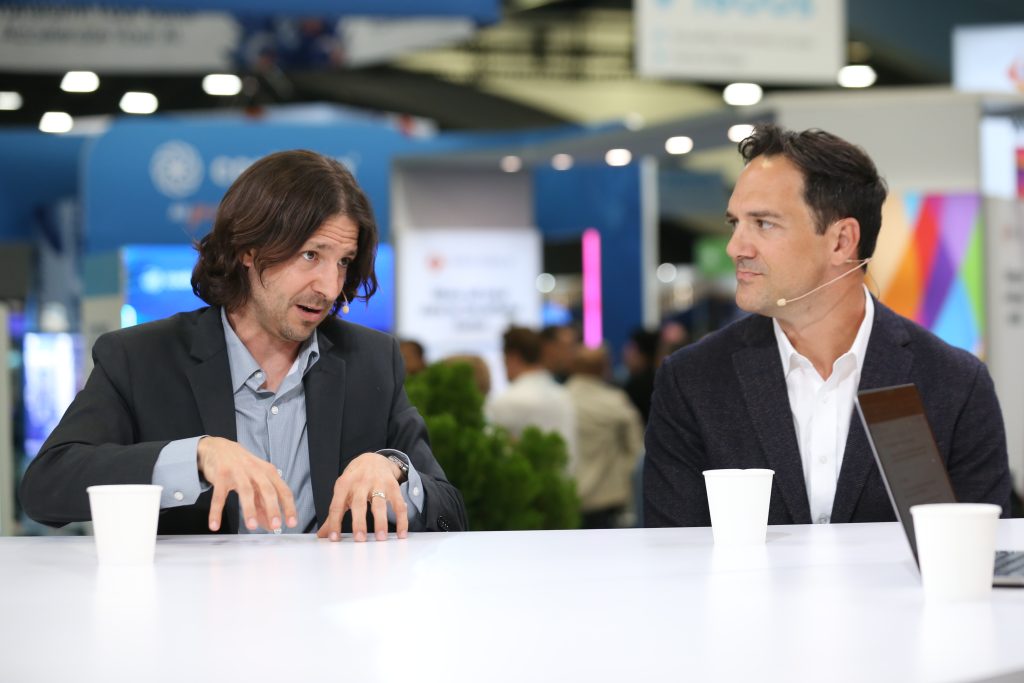The race is on to turn unstructured data into real business value — and AI is finally making it possible.
For years, documents, contracts and images sat buried in disconnected systems; now they’re finally being recognized for the value they hold. Generative AI and smarter data pipelines are helping organizations transform this raw content into actionable insights. The goal isn’t just to automate, it’s to unify fragmented data ecosystems and make better decisions, faster. As platforms evolve to bridge unstructured and structured data, businesses are rethinking what their content can actually do, according to Ben Kus (pictured, left), chief technology officer of Box Inc.

Box’s Ben Kus talks about AI and unstructured data.
“With generative AI, it unlocks a lot of the idea that generative AI was born on unstructured data,” Kus said. “It can not only help you understand it, but then also help you do things like pull data, extract data from it, answer questions about it and so on. This idea of generative AI helping you understand and find insights in your data is really a critical thing that many companies are looking at now.”
Kus and Chris Child (right), vice president of product, data engineering at Snowflake Inc., spoke with theCUBE’s Rebecca Knight at Snowflake Summit, during an exclusive broadcast on theCUBE, SiliconANGLE Media’s livestreaming studio. They discussed how generative AI, Box AI and Snowflake Openflow are helping enterprises unlock insights from unstructured data by integrating it with structured systems for smarter, more secure decision-making. (* Disclosure below.)
How unstructured data and Openflow are shaping enterprise strategy
Companies are increasingly looking to extract structured information from unstructured formats and use it within analytics platforms such as Snowflake. This creates a bridge between day-to-day business content and sophisticated data modeling. Tools such as Box AI automate this extraction process, but organizations often want to go further, combining extracted insights with broader operational datasets to drive intelligent workflows and AI applications, Kus explained.
“We have customers who have a million contracts and they want to go through and figure out who signed it, what’s the effective date, what are the key terms,” he said. “We show them how to do this … this Openflow announcement is just exactly what customers are asking for.”
Openflow, a new capability announced by Snowflake, is designed to make this integration seamless. It lets users stream both structured and unstructured data into Snowflake from systems such as Box, SaaS applications or even on-prem databases. With this convergence, organizations can pose complex, contextual queries that previously required time-intensive manual review, now enabled by real-time AI.
“With Openflow, you can bring the data from Box or other unstructured places along with your structured data, bring it together in Snowflake and start getting value out of it and using it in new and really exciting ways,” Child said.
The conversation also highlighted the need for strong governance and secure data access as enterprises bring AI deeper into their operational core. Data platforms must enforce granular controls and offer open architectures to avoid vendor lock-in, especially when sensitive business information is at stake. AI innovation cannot come at the expense of data integrity, according to Kus.
“If it turns into data leakage, then that is unnegotiable by almost all organizations,” he said. “In order to be able to use AI effectively, you have to have platforms that use AI effectively, and you have to make sure that you have open platforms that let you do things where you can. No company wants to be locked into any one single platform that doesn’t actually let you get your data in and out effectively.”
Here’s the complete video interview, part of SiliconANGLE’s and theCUBE’s coverage of Snowflake Summit:
(* Disclosure: TheCUBE is a paid media partner for Snowflake Summit. Neither Snowflake Inc., the primary sponsor of theCUBE’s event coverage, nor other sponsors have editorial control over content on theCUBE or SiliconANGLE.)
Photo: SiliconANGLE
Your vote of support is important to us and it helps us keep the content FREE.
One click below supports our mission to provide free, deep, and relevant content.
Join our community on YouTube
Join the community that includes more than 15,000 #CubeAlumni experts, including Amazon.com CEO Andy Jassy, Dell Technologies founder and CEO Michael Dell, Intel CEO Pat Gelsinger, and many more luminaries and experts.
THANK YOU

